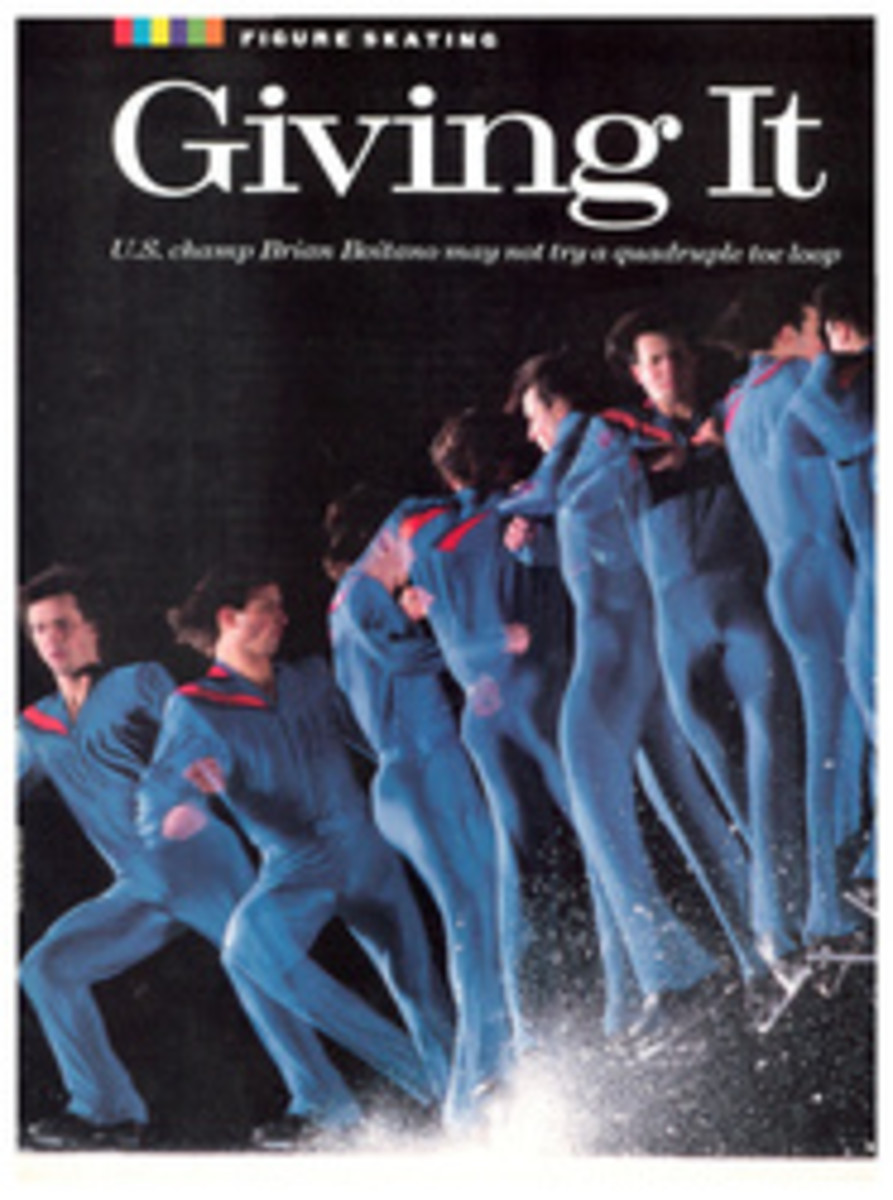
Artistry In Motion
In Livonia, Mich., engineers at Air-Flow Sciences, Corp. pored over pages of computer output and pondered coefficients of drag in an effort to advance the state of the art in bobsled design. In Seattle, high-tech types at the Flight Research Institute analyzed the body of a four-man bob with the help of Boeing's computers. In each case the mission was to construct faster vehicles for U.S. sledders to use in Calgary.
Meanwhile, outside Syracuse, N.Y., sculptor Jerome Malinowski painstakingly formed a model of a bobsled out of a big lump of clay. Eight months later, in October, that clay had been transformed into a sleek two-man sled that sat on the floor of Malinowski's rural studio. He says, "The main thing was that it be beautiful. It should work, of course, but my main interest was to have a beautiful sled." Malinowski, 48, an art professor at Syracuse University, pauses and adds. "I think if something looks right, it usually goes right. The idea was to have it look like a water mammal—a dolphin or killer whale. In terms of form, they're very efficient. When I saw the sled take this shape. I figured it might go fast. And you know. I think it will."
The U.S. bobsled team's splintered search for the perfect sled suggests a question: Which approach is best, the scientific or the soulful? No one seems to know. Previous can't-miss high-tech projects—such as the much ballyhooed Dodge sled of 1979 (it crashed on a trial run at Lake Placid)—were, in Malinowski's gentle assessment, "absolute catastrophes." So why not water mammals? Why not poetry in motion? Why not Malinowski? "That's what I asked myself when I was watching the Sarajevo Olympics on TV." he says. "I thought. Gosh. I can sculpt one of those, and I'll bet I could make it go fast."
This wasn't mere presumption. Twenty-five years ago Malinowski was designing automobiles for Ford and was knee-deep in coefficients of drag. "I do understand all that stuff." he says. "In fact. I was fascinated by aerodynamics and efficiency. Of course, you were an oddball if you talked about efficiency back then. All they wanted was fins."
So the artist left Ford's fins for the Far East. "I spent two years in Japan, designing and learning." he says. "It Changed my view." After three years he returned to the U.S. and settled on a 220-acre farm in central New York State. He taught art by day and sculpted by night, often using clay or fiberglass as his medium. He was thinking of clay and fiberglass as he watched the bobsleds race on TV from Sarajevo, where the fastest U.S. sled finished fifth.
After the Olympics were over, Malinowski became obsessed with the idea of building a better bob. In 1986 he got together with Bob Manning, an adjunct professor of engineering at Syracuse who, with the help of students, had already done some research on bobsled design. Malinowski then asked his studio research class if anyone was interested in joining him in a sled project. Dan Retz, then a junior, signed on. "Looked like a good way to get a grade." says Retz, They next brought their ideas to the U.S. Bobsled and Skeleton Federation in Lake Placid and were granted $3,500 in seed money. Malinowski's garage-bob effort was under way.
Malinowski built a 12-inch model of the sled, then ordered 350 pounds of clay and with Retz went to work on a full-scale model. Last August, after some 320 man-hours of sculpting, the clay looked like a bobsled. From this they fashioned a polyester mold, a "buck" in sculpting terminology. When Retz climbed into the buck, he lent the bobsled life. Says Malinowski, "Till then it was just an idea. Now it was a thing!"
But there was rough sledding ahead. New international safety standards mandated larger bumpers and rounder noses for all bobsleds, which would make the vehicles safer. "I wasn't used to this." says Malinowski. "When you finish a sculpture, someone doesn't say, 'Hey, this has to be different. Chop it off!' But what can you do? So we built up the bumpers, which changed the whole line of the sled. The funny thing is, it looked even better—more beautiful, more like the water mammal. These regulators were artists, in their way."
Using the buck, Malinowski and Retz made a shell of polyester, carbon fibers and Kevlar and attached the shell to the steel chassis of a sled that had crashed on the Lake Placid run. Then they took a step back and looked at their work. Sleek. Wavy. Smooth. It was, well, beautiful.
Ah, but was it fast?
The U.S. federation had reserved the track at Winterberg, West Germany, for the U.S. Olympic trials in October. The sculpted water mammal was one of two dozen sleds—including the computer-aided designs from Michigan and Washington—shipped for testing, and Malinowski, more nervous than he had been at his first one-man show, accompanied his creation to the trials. His faith was rewarded. "Its times were right up there with the best sleds'," says Malinowski proudly. "And we didn't have Olympic crews either."
That's an understatement. Even Malinowski—all 6'4" and 220 pounds of him—squeezed into the brakeman's position for a run. Donnie Hass, an experienced driver from Martville, N.Y., also tried the sled. "I saw it and said, 'God, it's beautiful.' " says Hass. "Jerry appreciated that, you could tell. And what's more, it's fast and smooth. It's faster than the Italian sleds I've been using. When Jerry contours the bottom and customizes it for a particular driver. I think it'll be the fastest sled on the U.S. team."
In late December the bob left Syracuse again, and Malinowski watched as it was crated and carried away. He shed no tears. All his life he had seen artwork leave the studio. That's the way it goes, in both sculpting and bobsled building. The Syracuse bob and two other sleds went to Innsbruck for testing, where the three U.S. Olympic team drivers—Brent Rushlaw, Matt Roy and Randy Will—would try them out.
The drivers will continue to test the sleds well into February, and the two drivers who qualify for Olympic competition can chose their sleds just before the two-man finals, Feb. 20 and 21. The water mammal may slide in Calgary, or it may not. Whatever happens, Malinowski the artist is satisfied. He has created the most beautiful bobsled the world has ever seen.
PHOTO
JOHN D. HANLON
IN HIS STUDIO, MALINOWSKI SHAPED HIS SLED FROM A GREAT LUMP OF CLAY
PHOTO
JOHN D. HANLON
MALINOWSKI'S SLED(ABOVE) IS QUITE A BIT SLEEKER THAN A RIVAL U.S. DESIGN
PHOTO
BILL EPPRIDGE
[See caption above.]
TWO ILLUSTRATIONS

